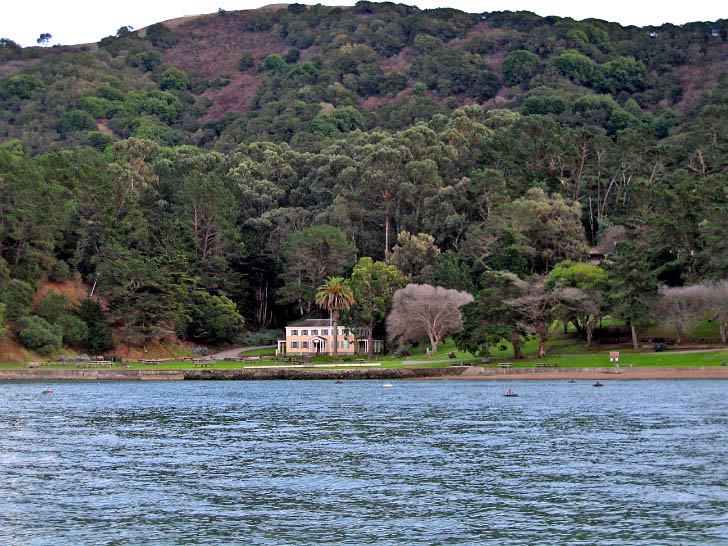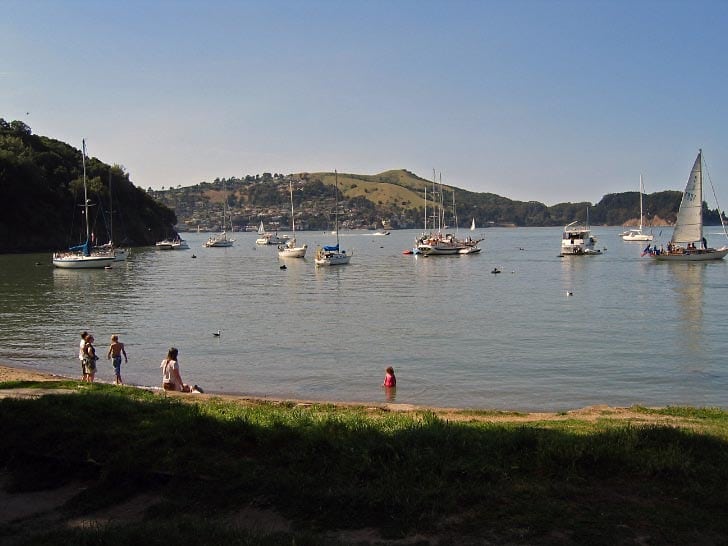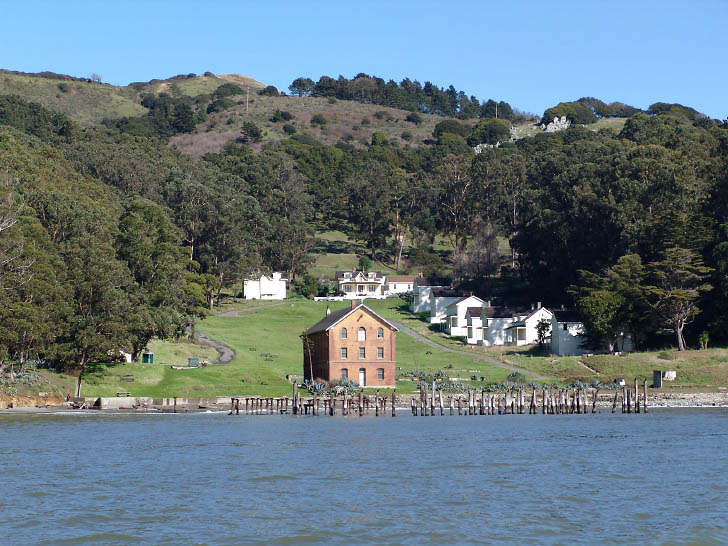Angel Island has played many roles in the history of San Francisco Bay. The earliest known inhabitants were Coast Miwok Indians; artifacts more than 1,000 years old have been found on the island. Anthropologists speculate that the Indians used the island as a temporary hunting camp.
Early History
The first European known to have seen Angel Island was Gaspar de Portola, who came overland to San Francisco in 1769. The first European ship known to visit the bay was the Spanish packet San Carlos, under the command of Captain Juan Manual de Ayala. The San Carlos spent almost a month in the cove that still carries Ayala’s name.
The next famous ship to spend time in Ayala Cove was the H.M.S. Racoon, a 108-foot British sloop of war. The Racoon arrived in San Francisco Bay in 1814 after a long and frustrating tour of duty, leaking badly and with seven feet of water in the hold. After trying and failing to beach the ship at the Presidio in San Francisco, it was finally successfully beached in Ayala Cove. The water between Angel Island and the Tiburon peninsula is named Racoon Straits in its memory.
The first "owner" of Angel Island was Don Antonio Maria Osio, a government official originally from San Jose del Cabo at the tip of the Baja peninsula. The Mexican government granted him Angel Island in 1839, on the condition that it be allowed to build a fort there if needed. Osio raised cattle on the island, with his herd growing to more than 500 head by 1846. The cattle were transported to San Francisco in boats owned and operated by William Richarsdon, who then owned most of the Marin peninsula and lived in Sausalito. Richardson’s Bay, of course, still carries his name.
Military Days

When the Bear Flag Revolt broke out in 1846, followed by the Mexican War, Osio fled to Hawaii. Three years later, California became part of the United States, and the U.S. Navy took possession of the island. Osio returned to California and spent a decade fighting for title to the Island, winning at first but ultimately losing to a government that simply wanted the island for itself.
Angel Island’s major points (Blunt, Stuart, Cambell, and Knox) were named for Navy officers on a ship that explored the Bay and charted the island in 1849.
In 1863, Camp Reynolds was built on the west side of Angel Island to strengthen the bay’s defenses against feared Confederate raiders. These first military buildings on the island still stand today and can be seen from the water or visited by land.
In 1864, a hospital was completed in what we now call Ayala Cove. The cove had been known at the time as Racoon Cove, and it then became Hospital Cove. By this time there were 13 guns in place at several points on the island. The army post was much reduced after the end of the war, but it continued as a quiet, remote post for almost 30 years.
Quarantine Station

San Francisco had a steady stream of immigrants from Asia, and the city wanted a quarantine station to keep sick immigrants from carrying infectious diseases into the city. In 1891, the quarantine station on Angel Island opened. Among the 257 people on the first ship to arrive at the station, there were two cases of smallpox.
The station was expanded over time to a capacity of more than 1,100 people by the early 1900s and became steadily busier as ship traffic increased. It ceased operation in 1944 and was formally abandoned in 1946.
A State Park

In 1957, Angel Island became a state park. Most of the quarantine station buildings were destroyed and the quarantine station area bulldozed. Today, only a few of the station buildings remain.
After more than 100 years of government service, Angel Island has returned to a state more like that of 100 years ago — but not without one more brief military service. From 1954 to 1962, a battery of twelve Nike missiles occupied the island’s southern point. About 100 men were stationed at the base. After only 8 years, bigger and better missiles made the Nike’s obsolete, and the island’s military role ended.
